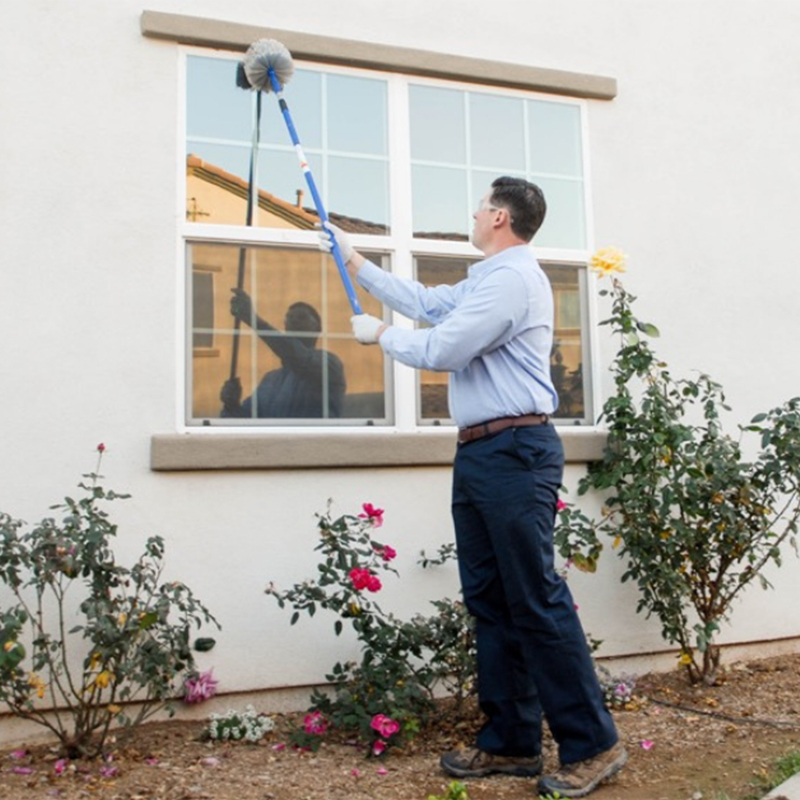When ants establish trails toward a home, they can quickly become a relentless nuisance. Effective ant control begins with securing the property perimeter to block entry points before these pests move indoors. Perimeter treatments create a protective barrier that targets active ants and deters new colonies from settling nearby, reducing the risk of infestations that can damage structures or contaminate food.
While these measures focus on preventing entry, they also play a crucial role in limiting the spread of existing colonies. By addressing the problem at its source (outdoors), homeowners can avoid costly and time-consuming interior treatments later on. With ants capable of traveling considerable distances and coordinating complex foraging networks, overlooking perimeter defenses often leaves a property vulnerable year-round. Proactive treatment not only keeps these insects at bay but also interrupts their seasonal surges, especially during warmer months when activity peaks. A well-placed, well-maintained perimeter treatment is often the first and most important line of defense in long-term ant prevention.
Understanding Ant Behavior for Better Control
Effective prevention starts with knowing how ants operate. These insects are highly organized, with workers foraging for food and moisture while following pheromone trails back to their nests. By targeting these trails and access points, perimeter treatments can disrupt their movement and nesting patterns.
- Colony structure: Most ant species have multiple queens and satellite nests, making complete elimination challenging without thorough treatment.
- Seasonal activity: Warmer months often lead to more visible foraging and increased nesting activity.
- Entry points: Gaps in siding, cracks in foundations, and poorly sealed windows or doors are prime targets for infiltration.
Gaining insight into these behaviors helps ensure that perimeter treatments are placed strategically for maximum effectiveness. Understanding the specific nesting habits of different species is also key, as certain types may prefer soil near foundations while others inhabit wall voids or roof spaces. If you want to explore how Arizona’s ant species differ in their nesting habits, this resource on understanding ant species provides a useful breakdown.
Strategic Placement of Perimeter Treatments
Placement is critical for stopping ants before they enter. The aim is to create an uninterrupted boundary that deters foraging trails and intercepts workers before they reach food or water sources inside.
- Foundation zones: Treat the base of exterior walls where ants commonly travel.
- Landscape borders: Apply products along mulch lines, garden edges, and near dense vegetation that touches the structure.
- High-traffic areas: Focus on spots where ant trails are consistently active, such as along sidewalks or fence lines leading toward the home.
Treatments should also account for environmental conditions. Moisture attracts ants, and overwatering plants close to the house can compromise the barrier’s effectiveness. Adjusting irrigation habits and pruning shrubs that touch the building will help maintain a clear, effective perimeter.
Integrating Sanitation and Habitat Modification
While perimeter applications are essential, their effectiveness increases when combined with environmental adjustments that make the property less appealing to ants. The cleaner and less resource-rich the surroundings, the less likely ants are to return after treatment.
- Eliminate food sources: Store pet food securely, clean outdoor cooking areas, and remove fallen fruit from yards.
- Control moisture: Fix leaks, improve drainage, and avoid overwatering landscaping near the foundation.
- Reduce harborage: Trim vegetation away from the home and remove debris piles where ants may nest.
These measures reduce the attractiveness of the property, making perimeter treatments more durable and preventing ants from quickly reestablishing trails. For more tips on minimizing factors that draw pests indoors, you can review this guide on making your home less attractive.
Why Professional Perimeter Treatments Are More Reliable
Professional ant control offers benefits beyond what store-bought solutions can achieve. Specialists have access to targeted products that are not available to the general public and know how to apply them with precision to address both current and potential infestations.
- Comprehensive inspection: Professionals identify ant species, trail patterns, and nesting sites for accurate treatment.
- Customized approach: Treatments are tailored to the property’s specific needs, factoring in structure type, landscaping, and environmental conditions.
- Long-term results: Products and application methods are designed to last longer, ensuring continued protection throughout peak ant activity seasons.
Relying on trained technicians also reduces the risk of incomplete treatment, which can allow colonies to rebound quickly. Since many ant infestations involve hidden satellite nests, missing just one can result in a full resurgence within weeks.
Monitoring and Maintaining the Barrier
A single perimeter treatment is rarely enough for complete, year-round ant prevention. Regular monitoring ensures that the barrier remains intact and effective.
- Seasonal checks: Inspect for signs of renewed activity, particularly during warm, wet months.
- Touch-up applications: Reapply treatment to vulnerable spots if weather, landscaping work, or pest activity compromises the barrier.
- Ongoing adjustments: Modify landscaping, repair structural gaps, and maintain sanitation to support the barrier’s strength.
Consistent follow-up keeps ants from finding new pathways into the home. The combination of professional-grade perimeter treatments and proactive property maintenance offers the highest level of protection against incursions.
Keep Your Home Ant-Free with Expert Help
Ant incursions can be persistent, but they are preventable with the right approach. A strong perimeter treatment, supported by environmental adjustments and regular monitoring, can safeguard your home effectively. For tailored, long-lasting solutions, contact T2 Pest Services, Inc. for professional assistance.





